Since I’ve been here, all sorts of dates have become staples of my annual pilgrimage through the months — dates which never had any significance for me because they didn’t have anything to do with me. Like most dates, today excepted.
Take May 5. No, I don’t mean Cinco di Mayo. It’s not Florence Nightingale’s birthday. Not the first publication of Don Quixote. Not the invention of WD-40. All events worth observing but they don’t have much to do with Venice.

May 5, just so you know, was the Death of Napoleon. In case this still doesn’t matter to you, your city probably wasn’t starved, raped, mutilated, and then sold into slavery. Probably. So anyway, May 5 is, in fact, a day worth remembering, however briefly.
But, I hear you cry, this is March, not May. I realize that. I just wanted to say that March 5, which comes to nobody’s mind except Lino’s (and now mine), claims just as important a place in my calendrical memory. And I wasn’t even there.
March 5, as Lino tells me every year (“Who knows why this date has remained so fixed in my mind?” he asked this morning), was the Battle of the Great Frozen Eel.
On the night between March 4 and 5, he went out in the lagoon to fish.
“There was hoarfrost in the bottom of my boat,” he starts out, to set the scene, and to point out how cold it was. March is famous for pulling tricks like that — it snowed here day before yesterday.

He fishes for a couple of hours out in the lagoon. “I got all kinds of great stuff,” he says (I’m freely translating). “Seppie. Passarini [European flounder]. And an eel.”
The fact of there being an eel isn’t so remarkable — the lagoon version has a lovely pale-green belly — but considering that he fishes with a trident, they’re pretty tricky to spear. So this was a sort of bonus.
All the fish are tossed into a big bin. He continues fishing. It continues to be really cold.
Finally he rows home, lugs the bin upstairs and dumps the contents into the kitchen sink.
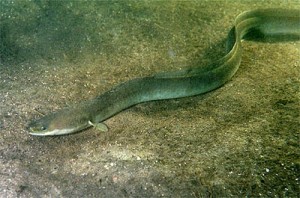
“All of a sudden” — (I love this part, it’s like a fairy tale when the witch or prince or stolen baby appears) — “all of a sudden, I see its gills begin to move.” He makes a slowly-moving-gills motion with his hand.
“My God! It was still alive!” Astonishing, if you believed, as I — and obviously Lino — would have, that freezing would kill a creature. But the gills were definitely moving. And shortly thereafter, the rest of the eel was also moving. A lot.
“You should have seen what that eel was doing in the sink,” Lino goes on. Naturally it’s slithering like crazy, trying to get out, but naturally it is failing. And naturally Lino is trying to grab it, but it cleverly has a slippery skin to prevent that.
“Finally I took a dishtowel and grabbed it using that,” he says. “It still wasn’t easy. I managed to pin it down and made a couple of cuts” (in whatever part of the body was convenient). Then, when it began to slow down, he continued with the usual procedure of dispatching and cleaning eel, which I will not describe to you. Anybody who wants to know can write to me.
So remember March 5, sacred to the memory of the gallant eel who didn’t realize he was better off frozen hard as stone.


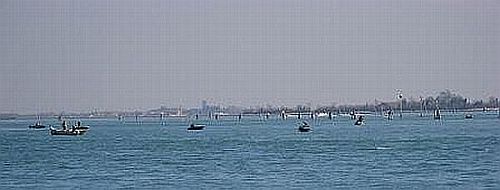

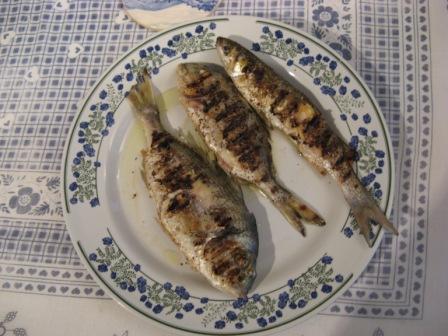
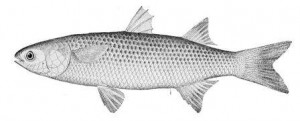
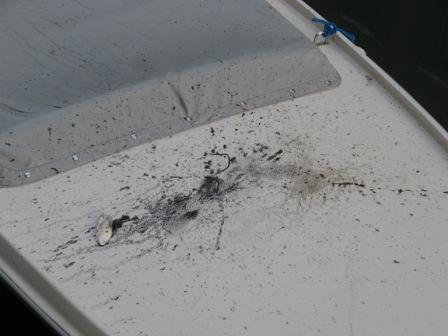 and a battle ensued, which the seppia lost. You can tell by the splashings of desperate black ink. Another clue is the cuttlebone, which if I had a parakeet or Andean condor I would immediately have taken.
and a battle ensued, which the seppia lost. You can tell by the splashings of desperate black ink. Another clue is the cuttlebone, which if I had a parakeet or Andean condor I would immediately have taken. 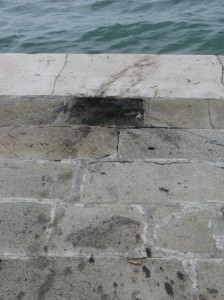 Many of them indicate epic battles, all futile.
Many of them indicate epic battles, all futile.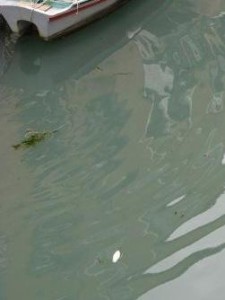
 They often go out at night, too, depending on the tides, rigging up a strong light to attract the animals. Or they use a fish-like lure. Lino once slew a vast number of them by hooking a medium-length remnant of a white plastic bag to his line and pulling it slowly through the water; despite the fact that seppie have some of the most developed eyes in the animal kingdom, it somehow looked irresistibly like another seppia. They don’t eat only crabs, shrimp, worms, or whatever — they snack on each other, as well. Too much information?
They often go out at night, too, depending on the tides, rigging up a strong light to attract the animals. Or they use a fish-like lure. Lino once slew a vast number of them by hooking a medium-length remnant of a white plastic bag to his line and pulling it slowly through the water; despite the fact that seppie have some of the most developed eyes in the animal kingdom, it somehow looked irresistibly like another seppia. They don’t eat only crabs, shrimp, worms, or whatever — they snack on each other, as well. Too much information?  One more thing: It may not be very likely that you’ll be buying seppie in the fishmarket, but if you are looking at them for whatever reason, you should know that the whiter they are (it’s more like a ghastly gray mortuary pallor), and the more smeared with sticky black ink, the older they are. Lots of ink is a Bad Sign.
One more thing: It may not be very likely that you’ll be buying seppie in the fishmarket, but if you are looking at them for whatever reason, you should know that the whiter they are (it’s more like a ghastly gray mortuary pallor), and the more smeared with sticky black ink, the older they are. Lots of ink is a Bad Sign.